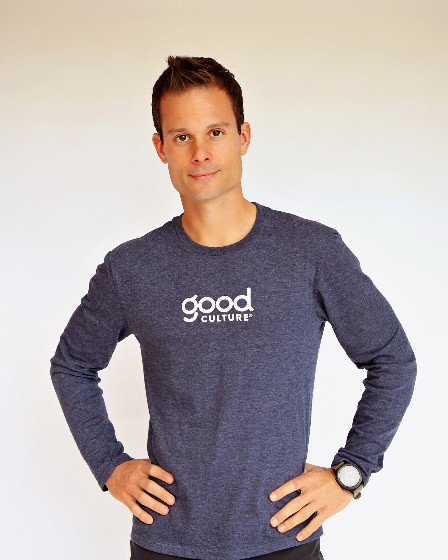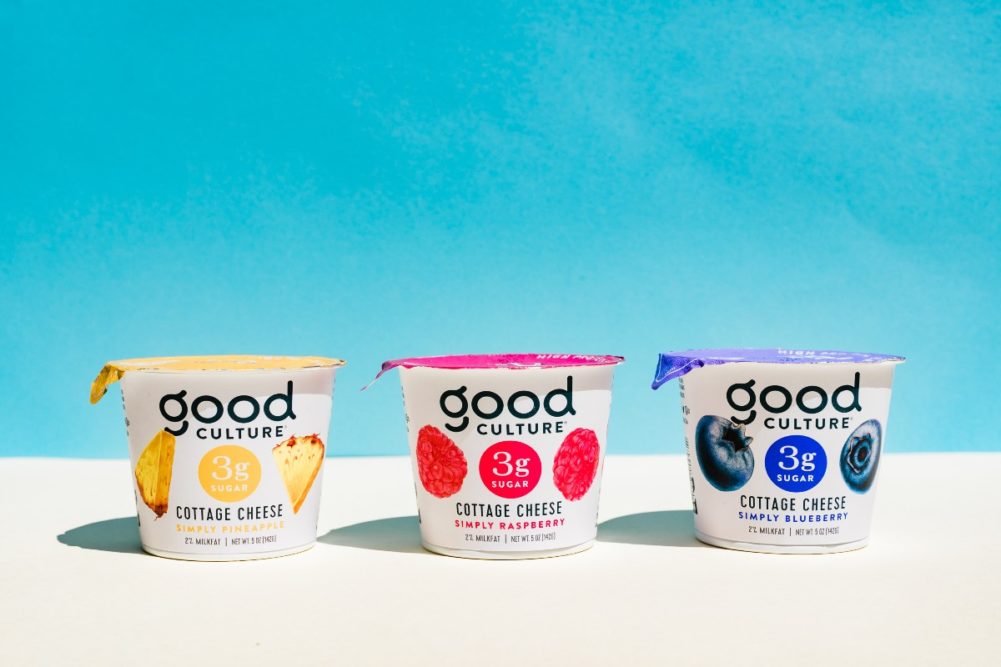When Jesse Merrill was diagnosed with ulcerative colitis, an autoimmune disease, in 2014, his doctors told him there was nothing they could do to cure him of the condition, which is brought on by chronic inflammation. Unsatisfied with that answer, Merrill decided to take matters into his own hands.
Exploring alternative forms of healing, Merrill found that a diet that included cultured dairy relieved his symptoms, eventually helping him overcome the disease.
Nine years since his initial diagnosis, Merrill is now the chief executive officer of the Irvine, Calif.-based Good Culture, which he co-founded. The company’s extensive line of cottage cheese and sour cream is made with regenerative and pastured-raised milk and Good Culture prides itself on practices which promote animal welfare and environmental stewardship.
Dairy Processing spoke one-on-one with Merrill about Good Culture’s mission, its place in the cultured dairy category and the company’s future.
Dairy Processing: How did Good Culture get started?
Jesse Merrill: My co-founder, Anders Eisner, and I saw a major disruption opportunity in the cottage cheese space. Cottage cheese was an overlooked super-food with more protein and less sugar than yogurt, but it lacked relevant innovation and brand appeal. The majority of the products on shelf were loaded with additives, sourced their milk from confined animals and mostly came in large, outdated tubs with little to no flavor options. We saw an opportunity to bring life back to a very sleepy $1.1 billion category that was larger than yogurt in the 1970s.
 Good Culture chief executive officer Jesse Merrill. | Photo: Kristy Phillips
Good Culture chief executive officer Jesse Merrill. | Photo: Kristy PhillipsOutside of the business opportunity, two things happened that deeply motivated me to build a mission-led business that would create real change. I was diagnosed with ulcerative colitis (UC), an inflammatory bowel disease. My doctor wanted me to live on harsh drugs for life and made it clear that I would never cure the disease.
I pushed back and asked if diet modification could have a positive impact and offer an alternative therapy. The answer was a resounding, ‘No.’ I immediately dismissed this, met with an integrative doctor, and committed to a three-year diet where I ate nothing but real foods.
My diet consisted of cultured dairy, other fermented foods, grass-fed and organic meat, cooked veggies and fruit. Within two months of living on this diet, all my symptoms went away without taking any drugs. Three years later, my colonoscopy showed no sign of ulcertative colitis. It was as if I never had the disease.
That said, I’m a big believer in food as medicine.
DP: What is the company’s mission? How does this impact company culture, practices and structure?
JM: Good Culture’s mission is to change the food system from the ground up, literally. We are focused on creating whole-body wellness by offering healthy, simple-ingredient, cultured foods that are good for people, planet and animals. This thinking informs every decision we make as a company, from the family farms that we work with, our focus on regenerative agriculture and pasture-raised farming, supply chain strategy, ingredient selection and more.
When I entered the dairy industry, I learned that the majority of US dairy cows were confined, creating both an animal welfare and environmental problem. This broke my heart, and I knew that I had to fight to change the food system. Good Culture is dedicated to building a supply chain that sources from regenerative farms with a focus on planned grazing, where animals are free to roam and are strategically moved across pastures to create more productive land. Planned grazing also contributes to healthier soil. Healthier soil grows more nutrient-dense foods, creates more resiliency, sequesters more carbon and leads to a more profitable model and brighter future for our farmers.
Good Culture offers an elevated product experience. We source all our milk from family farms. Our products are only made with real food and simple ingredients. We never use gums, preservatives, stabilizers, etc., which makes our product thick and creamy versus soupy and slimy. Good Culture is naturally higher in quality protein (we never use protein concentrates), and we only use sea salt versus highly processed common salt. Good Culture is available in multi-serve and single-serve on-the-go cups. We also offer several different flavor varieties in our single-serve options, including our 3G line that only has 3 grams of sugar and 15 grams of protein.
We are a Certified B Corporation and 1% for the Planet company – we donate 1% of net sales from select products to support responsible farming practices, including a focus on regenerative ag and planned grazing.
DP: Good Culture aims to bring “real healing foods” to people – what does that mean?
JM: Based on my personal story with ulcerative colitis, I know that cultured foods have the ability to heal. Long term, we strive to build a healing cultured foods platform with several product options.
DP: Talk about your current portfolio. Are there new product innovations on the horizon for Good Culture?
JM: Yes, we just launched a pasture-raised and probiotic clean label cream cheese in Whole Foods and look forward to expanding that range across 2023 and beyond.
DP: As a dairy company that utilizes co-manufacturing, what do the day-to-day operations look like at Good Culture?
JM: We consider our co-packers an extension of the team and make sure that we all view the relationship as a long-term partnership versus a transactional relationship. We work very closely with all of partners to ensure the highest quality products are manufactured and shipped to our customers weekly.
DP: Can you speak about how what happens on the farm affects your product development?
JM: We became a Certified B Corporation in 2020. Because our mission to change the food system is at the heart of what we do, we wanted to make it official and partner with a network of companies driving change. Becoming a B Corp is a rigorous process that looks at our business from several angles: environment, workers, community, customers and governance. The certification process takes several months, and we could not be more proud of becoming a Certified B Corporation.
When Good Culture set out to make clean label products with real, simple ingredients including milk sourced from pasture-raised and organic family farms, we quickly discovered that a pasture-raised milk supply didn’t exist at scale because the majority of US dairy cows are confined. This realization prompted us to partner with Dairy Farmers of America (DFA) in 2021 to create the Path to Pasture program.
Path to Pasture provides DFA farmers with education on and access to sustainable, regenerative agriculture farming resources, with a focus on planned grazing. These resources empower farmers to create healthier soil and grow more nutrient-dense feed that, in turn, reduces carbon emissions. Each transition of conventional farms to regenerative agriculture farms effectively builds a new milk supply and creates positive food system change.
DP: How do you feel about the state of dairy among today’s consumers? Are there any trends you are paying particular attention to?
JM: The dairy space is perfectly positioned to capture today’s consumer, as dairy products are inherently clean label and nutrient-dense. We are seeing a clear shift away from highly processed products and a movement towards simple real foods. Cultured dairy checks all the boxes.
DP: What are some future initiatives for the company? How do you plan to continue to grow upon your success thus far?
JM: We will continue to grow our core business with awareness driving initiatives while proving out extendibility with disruptive innovation that overdelivers in taste, health and mission.

